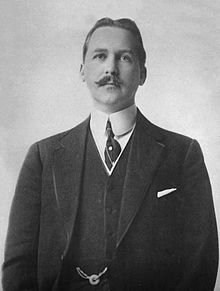ALBERT HERTER
(American, 1871-1950) Albert Herter was a painter, illustrator, muralist, and portraitist was born in New York City in 1871. He was the son of Christian Herter, of Herter Brothers of New York, who was famous for fine furniture-making and interior design. Albert grew up in a home devoted to the arts. He studied at the Art Students League in New York, and in Paris at the Académie Julian with J. P. Laurens. In Paris Herter met his wife, painter Adele McGinnis. Albert and Adele Herter received seventy-five acres on Georgica Pond in East Hampton, New York as a wedding gift. They commissioned Grosvenor Atterbury to design an extravagant Mediterranean-style villa they called “The Creeks.” The house, built in 1899, became the center of civic, social and cultural life in the East Hampton community for decades. The Herters both embarked on careers as artists. Albert also formed his own company, Herter Looms in New York, which manufactured hand-woven textiles and tapestries. The company proved successful. The Herters traveled widely as well, and divided their time in the U.S. between New York and Santa Barbara, California. Their California home was “El Mirasol,” the grand Herter family estate. Herter designed and executed many large murals; among them: “Le Départ des Poilus, Août”, which was dedicated to his son who was killed in World War I, and painted for the Gare de l’Est in Paris; “Milestones on the Road to Freedom in Massachusetts”, for his second son, Christian, Governor of Massachusetts and Secretary of State under Dwight D. Eisenhower, for the House of Representatives in Boston; “Prometheus Stealing the Divine Fire”, for the National Academy of Sciences in Washington, D.C.; “The Pageant of Nations” for the St. Francis Hotel in San Francisco; “An Allegory of Education and Fundamental Orders” for the Connecticut Supreme Court at Hartford; four murals for the Wisconsin State Capitol at Madison; and eight for the Los Angeles Public Library, including Fiesta at a Mission. Herter was a popular illustrator as well, creating artwork for books such as “Illustrated Tales of the Enchanted Islands of the Atlantic” by Thomas Wentworth Higginson, and “Old Creole Days” by George W. Cable, and designs for posters such as the one he created for the Red Cross during World War I. Herter painted mythic, genre, landscape, and still life subjects, and was commissioned to paint many portraits.
Albert Herter was a painter, illustrator, muralist, and portraitist was born in New York City in 1871. He was the son of Christian Herter, of Herter Brothers of New York, who was famous for fine furniture-making and interior design. Albert grew up in a home devoted to the arts. He studied at the Art Students League in New York, and in Paris at the Académie Julian with J. P. Laurens. In Paris Herter met his wife, painter Adele McGinnis. Albert and Adele Herter received seventy-five acres on Georgica Pond in East Hampton, New York as a wedding gift. They commissioned Grosvenor Atterbury to design an extravagant Mediterranean-style villa they called “The Creeks.” The house, built in 1899, became the center of civic, social and cultural life in the East Hampton community for decades. The Herters both embarked on careers as artists. Albert also formed his own company, Herter Looms in New York, which manufactured hand-woven textiles and tapestries. The company proved successful. The Herters traveled widely as well, and divided their time in the U.S. between New York and Santa Barbara, California. Their California home was “El Mirasol,” the grand Herter family estate. Herter designed and executed many large murals; among them: “Le Départ des Poilus, Août”, which was dedicated to his son who was killed in World War I, and painted for the Gare de l’Est in Paris; “Milestones on the Road to Freedom in Massachusetts”, for his second son, Christian, Governor of Massachusetts and Secretary of State under Dwight D. Eisenhower, for the House of Representatives in Boston; “Prometheus Stealing the Divine Fire”, for the National Academy of Sciences in Washington, D.C.; “The Pageant of Nations” for the St. Francis Hotel in San Francisco; “An Allegory of Education and Fundamental Orders” for the Connecticut Supreme Court at Hartford; four murals for the Wisconsin State Capitol at Madison; and eight for the Los Angeles Public Library, including Fiesta at a Mission. Herter was a popular illustrator as well, creating artwork for books such as “Illustrated Tales of the Enchanted Islands of the Atlantic” by Thomas Wentworth Higginson, and “Old Creole Days” by George W. Cable, and designs for posters such as the one he created for the Red Cross during World War I. Herter painted mythic, genre, landscape, and still life subjects, and was commissioned to paint many portraits.
His paintings are among the collections at the Detroit Institute of Art; the Fine Arts Museum of San Francisco; Metropolitan Museum of Art; Brooklyn Museum of Art; and the Smithsonian American Art Museum. Adele Herter died in 1946, and Albert died in 1950 at “El Mirasol,” which by that time had been sold and converted into a retirement home for the wealthy.
